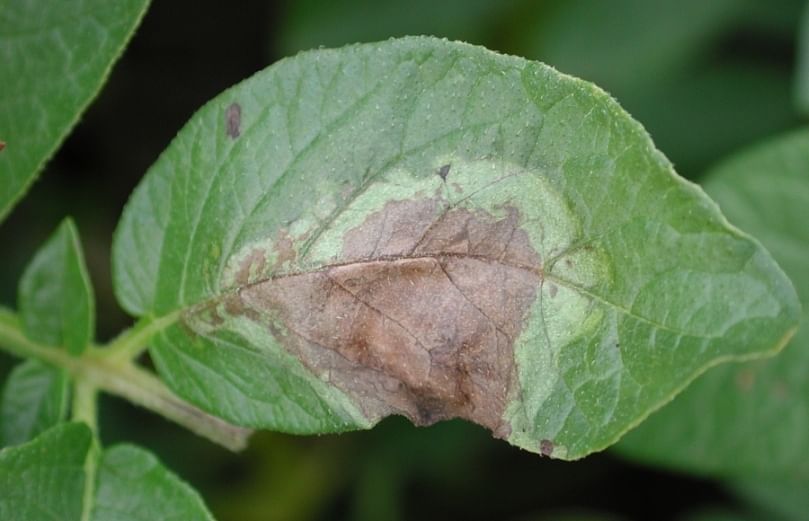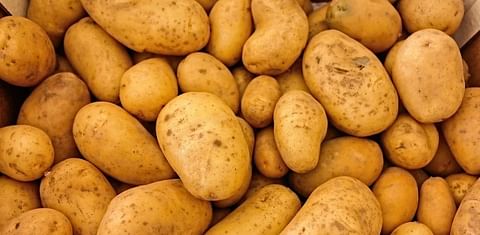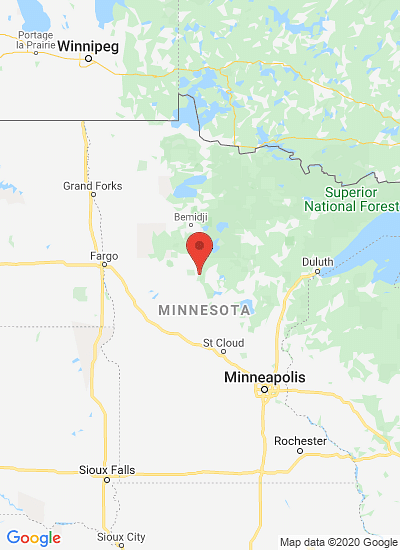The webcast is developed by Amanda Gevens, Associate Professor and Extension Plant Pathologist and the University of Wisconsin–Madison
‘Focus on Potato’ Webinar: Late Blight Management

Late blight is a potentially destructive disease of potato and tomato crops worldwide that can result in significant losses if detected too late, diagnosed incorrectly, or if not treated properly.
While the disease has been studied by many for over a century, changes within the Phytophthora infestans pathogen population have required further in depth investigation for management. From 2009 to the current, a group of newly identified genotypes/clonal lineages/strains of the pathogen were identified, with US-23 becoming most predominant in both tomato and potato production areas of the continental U.S.

Late blight (Phytophthora Infestans) lesions on a potato leaf (Courtesy: Jeff Miller, Miller Research LLC)
This presentation will offer new information on the characterization of US-23 and other newer clonal lineages as it pertains to pathogen persistence and management.
Further, a process for integrated late blight management, established for Wisconsin, will be shared to aid practitioners in understanding critical concepts of the pathogen and fungicides to enhance overall disease management.
The Plant Management Network (PMN) has released a new presentation entitled “Integrated Late Blight Management” to help growers, crop consultants, and extension agents reduce the likelihood and spread of late blight infection by utilizing a range of preventive practices and treatment strategies.
The webcast, developed by Amanda Gevens, Associate Professor and Extension Plant Pathologist and the University of Wisconsin–Madison, describes the characteristics of the most common late blight-causing strains and discusses how infections occur and spread. The presentation stresses the importance of identifying potential sources of infection and monitoring environmental factors that can promote fungal growth.
Critical strategies and concepts covered in detail include:
- Monitoring regional forecasts and watching for symptoms
- What to consider when selecting a foliar fungicide program
- The importance of timing and thoroughness of chemical applications
The 37-minute presentation will remain open access through July 31 2016 in the Focus on Potato webcast resource.
Access Presentation:
“Integrated Late Blight Management”The Plant Management Network is a nonprofit publisher of applied, science-based resources that help enhance the health, management, and production of agricultural and horticultural crops. Partnering with over 80 universities, nonprofits, and agribusinesses, PMN provides materials covering a wide range of crops and contemporary issues through the online PMN Education Center.











